Ambulances, Stethoscopes, Hospital Curtains: Beware of Fomites
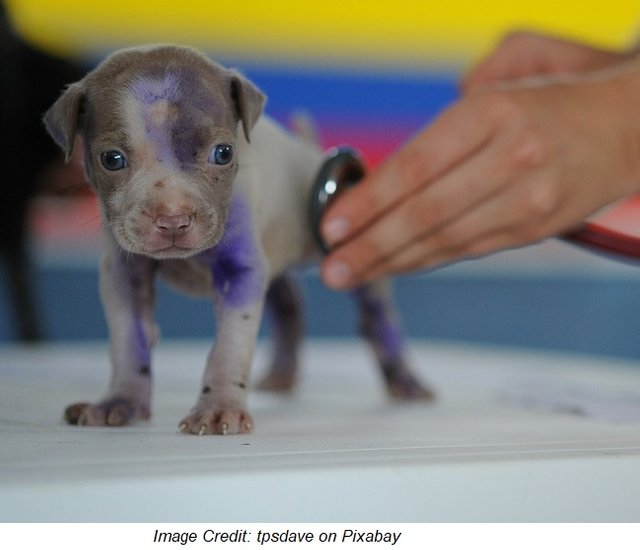
On January 30, 2020 WHO declared a global health emergency because of the emerging COVID-19 virus. With multiple cities in China under quarantine, now seems like a good time to look at transmission routes. Though people around the world may sanitize hands and don face masks, there are avenues of transmission that are difficult to avoid. Healthcare providers, and healthcare facilities are among these.
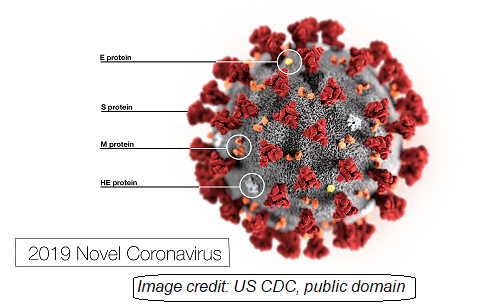
So many points of contact exist in the healthcare system that I have to limit my discussion here to only three that may serve as fomites. A fomite is an inanimate object that transmits disease-causing microorganisms.
The three I will briefly consider are pretty basic for most people who use healthcare facilities: stethoscopes, ambulances (ground, not air) and hospital textiles (sheets/privacy curtains). Of the three,stethoscopes have been the subject of the most research. Despite the long-established fact that stethoscopes can transmit disease, there is an alarming lack of concern about this among many healthcare professionals. And, even when protocols are followed, cleaning is not 100% effective.
As the studies cited below reveal, however, protocols generally are not followed.

The European Journal of Public Health published the results of a meta analysis
(2018) of stethoscopes as fomites. The conclusion: "Stethoscopes
have an high contamination of microorganisms. Some of them are also
involved in Hospital Acquired Infections." The authors of the study
suggest that the absence of standardized protocols in healthcare
facilities, across the world, leads to the transmission of disease.

Saudi Arabia
A study carried out in the King Fahd Hospital of the University in Saudi Arabia looked at cleaning protocols employed by healthcare workers. The "gold standard" of sanitizing a stethoscope is "swiping using alcohol pads", before and after each patient. How common is this practice? The chart below was derived from the Saudi study.
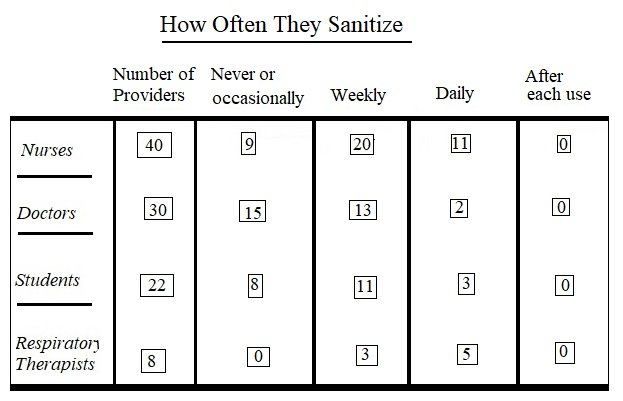
Chart constructed by me, using information published in the study
100 stethoscopes were collected and cultured. 70% were free of microorganisms. 30% were contaminated. Seven of the contaminated instruments tested positive for E. coli. Two had Klebsiella, nine had S. epidermis, and twelve had gram positive bacilli.

E. coli

GIF adapted (by me) from a video credited to Taute K, Gude S, Tans S, Shimizu T. Used under a CC 4.0 license

United States
In a study conducted at the U. of Pennsylvania Perelman School of Medicine, stethoscopes used in the ICU were cultured. The findings: multiple pathogens, including: "Staphylococcus (including S. aureus); Pseudomonas; Acinetobacter; Clostridium; Enterococcus; Stenotrophomonas; and Burkholderia."
A surprising finding (to me): even after cleaning not all stethoscopes tested as 'clean'.

Pseudomonas
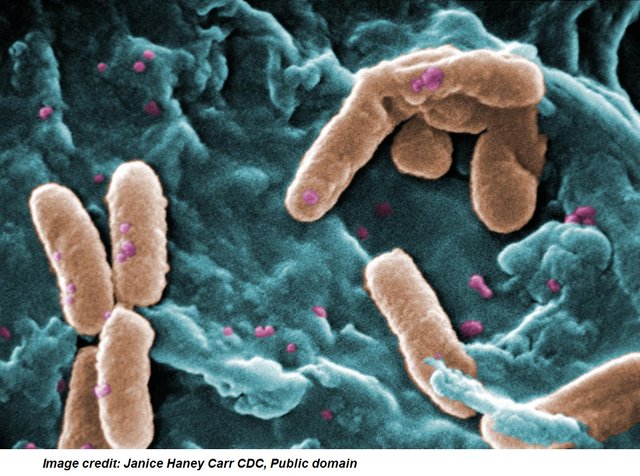


Nigeria
1800 stethoscopes were cultured. The following pathogens were detected: "Escherichia coli (10.0%), Proteus Mirabilis (8.33%), Proteus vulgaris (6.70%), Pseudomonas aeruginosa (23.3%), Staphylococcus aureus (0.83%), Streptococcus spp. (18.3%), E. faecalis (3.33%), Coagulase negative staph (28.3%) and Salmonella choleraesius (0.83%)."

Canada
A 2011 study (published by Cambridge.org) came up with the following results: of 110 stethoscopes collected from 3 emergency room departments: "Fifty-four specimens grew coagulase-negative sta-phylococci and one grew methicillin-susceptible S.aureus. No MRSA was cultured." Questionnaires were handed out that inquired about cleaning practices. Findings: only 8% of the respondents ("all nurses") reported cleaning the stethoscope after each patient.



Multinational
An essential, often unavoidable link between healthcare consumers and healthcare providers is the ambulance. An article published in the Journal of the American Society for Microbiology (2017) looks at ambulances as fomites. The authors of the article explain that while disease transmission in hospitals (nosocomial transmission) has been studied extensively, this is not true for EMS--ambulance services. The authors state: "Our review provides evidence that EMS microbiomes are dynamic and important pathogen reservoirs." In other words, traveling in an ambulance can make you sick. EMS workers themselves are also at risk, and may be carriers of disease contracted in their vehicles.
The study cited in this article looked at data from eight countries: United States, Australia, Saudi Arabia, Germany, Denmark, Thailand, United Kingdom and South Korea. While a variety of pathogens were identified in ambulances (ground, not air) from different countries, only ambulances in the U. S. and Germany tested positive for MRSA. And in those tests, the U.S had a much higher occurrence.
The authors of the article are quick to point out that the U.S. has far less stringent protocols for handling MRSA patients than does Germany, or the other countries included in the study.
The article concludes with this assessment: EMS workers have to be better educated about pathogens and modes of transmission; decontamination procedures must be improved; and these enhanced procedures are essential to meet emerging challenges of "biological threats, bioterrorism and epidemics."

Egypt
A multi-center study looked at twenty-five vehicles. Sixteen "selection points" were swabbed in each vehicle. The results: "589 bacteria were isolated and 286 (48.6%) of the isolates were potentially pathogenic. The highest contamination rate with pathogenic bacteria was detected in suction devices (75.8%) and stethoscopes (67.7%)." The usual suspects, staphylococci, Klebsiella, E. Coli, Citrobacter spp. and Proteus spp. were detected. Several cultured pathogens were methicillin resistant. The authors of the study conclude that even before patients get to the hospital they may contract multidrug-resistant infections. Just from riding in an ambulance.

The United States (Specifically Oxygen Canisters)

The Journal of Emergency Medicine published the results of a study that looked at methicillin-resistant Staphylococcus aureus on oxygen canisters in ambulances. The results: nine out of nine canisters cultured tested positive for MRSA. Off-site, in a facility where the canisters were stored, 67 out of 70 cultured positive for MRSA. The study concludes: "Oxygen cylinders appear to act as a fomite for MRSA".


This one really got me. A lot of attention is paid to hard surfaces in healthcare facilities. But how about those curtains we casually pull aside for privacy. Or, how about the sheets we must sleep on?
One article I found in Infection Control Today considers "healthcare textiles and other soft surfaces" as fomites.

Privacy Curtains
With regard to privacy curtains:
The authors of the article state that even when cleaning does occur
(which is not often the case) dangerous pathogens remain and may be
passed on to patients and/or healthcare workers. The pathogens include:
Clostridium difficile; vancomycin-resistant enterococci (VRE); methicillin-resistant Staphylococcus aureus (MRSA); Acinetobacter baumannii; and Pseudomonas aeruginosa.
The results of a survey about cleaning protocols for privacy curtains: out of fifty respondents, 37 percent (14/38) of the facilities surveyed cleaned ‘only when visibly soiled’; 13 percent (5/38) cleaned ‘every month’; 13 percent (5/38) ‘every 3 months’ and, remarkably, 13% cleaned them only once a year!
Sheets
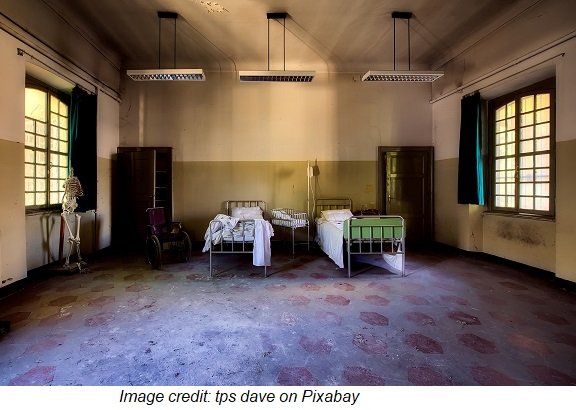
A 2018 study
out of the UK had some disturbing findings. Even after being
commercially laundered according to healthcare industry standards, some
sheets still carried C. difficile, which is a persistent and
difficult to treat pathogen. The authors of this study suggest that
endurance through cleaning might explain some C. difficile outbreaks among patients and healthcare workers.
Finally, another study suggests that pathogens from sheets in a laundry room could be aerosolized. Workers are infected with these air-borne pathogens. The workers then may transmit disease through a facility.
In Conclusion
Whatever the outcome of the current coronavirus alarm, it is certain
that transmission vulnerabilities exist in the healthcare system...in
all healthcare systems. This is partly due to ineffective methodology,
but mostly due, it seems, to human failure. Healthcare workers must be
better educated and more diligent in applying established protocols.

Thank you for reading my blog

Steem on!

Pixaby Links:
Hospital
Oxygen/Scuba tank
Ambulance
Puppy
Some Sources Used in Writing This Blog
- TRINITY HOSPITALOwned and Operated byMountain Communities Healthcare District2012 Annual House-wide In-Service:Hand-washing, Infection Prevention, PPE Use, Seasonal and Novel Influenza, Respiratory Hygiene / Cough Etiquette, MRSA, C-dif
- Ambulance vehicles as a source of multidrug-resistant infections: a multicenter study in Assiut City, Egypt
- Emergency medical services oxygen equipment: a fomite for transmission of MRSA?
- The Emergency Medical Service Microbiome
- Bacteriological assessment of stethoscopes used by healthcare workers in a tertiary care centre of Nepal
- A novel approach to stethoscope hygiene: A coat-pocket innovation
- Pan African Medical Journal Isolation of pathogenic bacteria from fomites in the operating rooms of a specialist hospital in Kano, North-western Nigeria
- SciELO Analytics Sphygmomanometers and thermometers as potential fomites of Staphylococcus haemolyticus: biofilm formation in the presence of antibiotics
- Journal of the Society for Healthcare Epidemiology of America, Infection Control & Hospital Epidemiology
- WHO WHO Declares Coronavirus Outbreak a Global Health Emergency
- CDC About Coronavirus Disease 2019 (COVID-19)
- Center for Food Security and Public Safety Fomite Exposure
- European Journal of Public Health Contamination in Stethoscopes: A Retrospective Review
- BMC Research Notes Bacteriological assessment of stethoscopes used by healthcare workers in a tertiary care centre of Nepal
- Journal of Family and Community Medicine Bacterial Contamination of Stethoscopes
- Medpage Today ICU Stethoscopes Harbor DNA from Nosocomial Bacteria
- Cambridge.org Examination of staphylococcal stethoscopecontamination in the emergency department (pilot)study (EXSSCITED pilot study)
- Journal of the American Society for Microbiology The Emergency Medical Service Microbiome
- Infection and Drug Resistance Ambulance vehicles as a source of multidrug-resistant infections: a multicenter study in Assiut City, Egypt
- Journal of Emergency Medicine Emergency medical services oxygen equipment: a fomite for transmission of MRSA?
- Infection Control Today Hospital Privacy Curtains and Bed Sheets: Soft Surface Contamination and Transmission
- Cambridge.org From ward to washer: The survival of Clostridium difficile spores on hospital bed sheets through a commercial UK NHS healthcare laundry process
- Microbiome Microbial aerosol liberation from soiled textiles isolated during routine residuals handling in a modern health care setting
- Modern Healthcare Hospital bed linens could be source of C. difficile outbreaks
- CDC Klebsiella pneumoniae in Healthcare Settings
- Infection Control and Hospital Epidemiology Contamination of Hospital Curtain with Healthcare-Associated Pathogens
- ResearchGate The Impact Of Hospital Bed And Beddings On Patients: The Ghanaian Healthcare Consumer Perspectives
- Florence Health Even “Clean” Hospital Sheets Carry Potentially Deadly Bacteria
- Florence Health 6 Ways Healthcare Workers Unknowingly Spread Deadly Bacteria
- Clinical Infectious Diseases The Role of Patient Care Items as a Fomite in Healthcare-Associated Outbreaks and Infection Prevention
- Nature Reviews: Microbiology Staphylococcus epidermidis – the “accidental” pathogen
That was a real eye-opener. I hadn't even thought about infection from sheets and privacy curtains. I'm very surprised they don't use ozone for laundry and cleaning. Probably because it's too cost-effective and there are no big bucks to be made out of it.
I wonder was the situation any better in the 70s and 80s when you had matrons in charge and hospitals at least smelt of disinfectant.
I was visiting my father in hospital a couple of years ago and the stench of urine in the ward was overpowering. When I entered, several of the patients including my father, had their bedsheets over their heads. I thought there'd been a mass geriatric cull.
Hi @deirdyweirdy,
An eye opener for me too. There was so much more, especially about sanitation. I had to stop my self from going into that. So many interesting ideas. I believe UV was covered.
The conditions your father had to tolerate---unforgivable. People have to be held to account. Is it money? Indifference?
You must have been so upset.
My daughter is like you...she loves the smell of bleach, because then she knows something has been sanitized.
Thanks very much for your support. Much appreciated. I hope you got that WeWrite story out. I think I'll just squeak under the finish line tomorrow morning (unless I got the time wrong). Mine is quite peculiar.
Be well. Be peaceful.
AG
I love your very peculiar story. Unfortunately, we have gale force winds here at the moment and mine blew away.
At least the dog didn't eat it :)))
:) Unfortunately, I had to get rid of the dog.

Dear AG,
many thanks for this highly interesting and super well researched article!
It is unfortunately often the case that patients leave a hospital more ill than they were admitted and do not know why. It is incredibly important to be aware of the transmission of germs again and again.
I like your chosen opening photo very much:
Sex sellsPuppies sell... ;-)Many kind regards,
Chriddi
Dear Chriddi,
Now Max will want to read it.
Thank you so much for your kind words. A few years ago I reviewed a book that described the history of Bellevue Hospital (New York City). In the 19th century, hospitals were feared because they were cesspools. Maybe we've gone beyond that, but it's really scary (and unacceptable) that people still get sick because they go to the hospital.
Thanks so much for your support and for reading my rather technical blog.
Wishing you and Max a healthy, happy day.
Warm regards from New York,
AG
My son was once in isolation because he had a highly contagious bacterial condition. Every person who entered the room was supposed to put on gloves, a mask and a paper suit, dispose of those at the door before they left, then sanitize their hands. Most people did this. Just guess who didn't - the doctors! They came in there with their stethoscopes, and moved the privacy curtain aside with their bare hands. Some of them didn't even bother to sanitize their hands when they left. Good article!
Hi @owasco,
That's a terrible, and not surprising story. I think we all have to stop being embarrassed and just tell doctors what we want. Wash their hands. As @chappertron said in his comment, ask the doctor if the stethoscope is sterilized. If not, I think manners may literally kill us.
Thank you for your support and your comment.
My story is almost done. Hope I can post it in the morning before the deadline.
See you there :))
AG
Thank you for your very good research and all the informations. Up to now i did not think about the curtains in a hospital....
Hi, @ditsch
I appreciate that very much. I was a little disgusted about the curtains. Can't believe some places don't change them at all unless they "look" dirty. Oh my heavens.
Thanks for your feedback and support.
Regards,
AG
Not to mention wheelchairs... every entrance to the hospital is supposed to have some on hand to wheel in sick patients, but how many have staff members or volunteer sanitize wheelchairs between uses?
To hear that stethescopes that allegedly were cleaned did not prove to be clean... ewww.
My dad's aversion to hospitals and doctor office makes more sense now....
Thank you for another very informative and interesting news item, agmoore!
Thank you @carolkean, for that endorsement. I agree with your father. A total aversion, here, also. I once signed myself out of a hospital against medical advice, and another time threatened to do the same. So they let me go. Actually, they can't hold you. People don't realize that. Insurance companies still pay, no matter what the hospital says. Why wouldn't they? You save the insurance company money :))
I'm heading over to Owasco's we-write. This blog had me distracted so I'm late. A hurried story, but still supporting her by participating.
See you over there.
AG
I'm so happy to hear you plan to tackle that We-Write - in support of @owasco, if not for fun and a chance to show off your writing talent. With your knowledge of hospitals and doctors, you have a lot to bring to the story. And your medical knowledge... you could write thrillers set in the health care industry!
Hey @agmoore,
thanks for drawing our attention to this subject.
I will ask my doctor next time whether she cleaned her stethoscope thoroughly.
Regards
Chapper
😅
Thank you, Chapper
And don't touch the curtain :)
Regards, AG
This post has been voted on by the SteemSTEM curation team and voting trail. It is elligible for support from @curie and @minnowbooster.
If you appreciate the work we are doing, then consider supporting our witness @stem.witness. Additional witness support to the curie witness would be appreciated as well.
For additional information please join us on the SteemSTEM discord and to get to know the rest of the community!
Thanks for having used the steemstem.io app and included @steemstem in the list of beneficiaries of this post. This granted you a stronger support from SteemSTEM.
Thank you very much. Greatly appreciated.
AG :)
Shared on Twitter